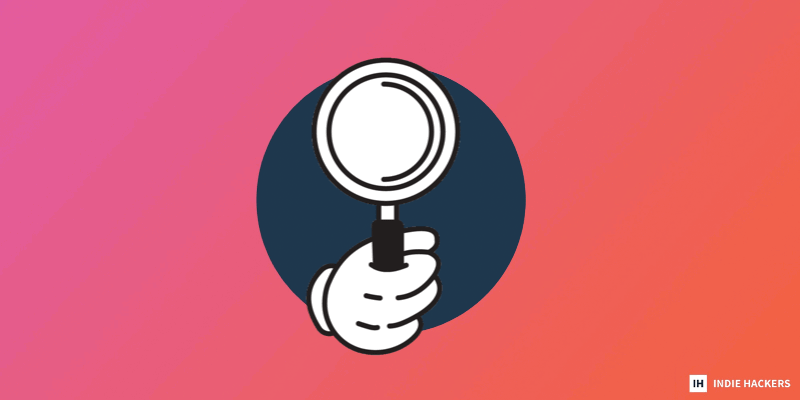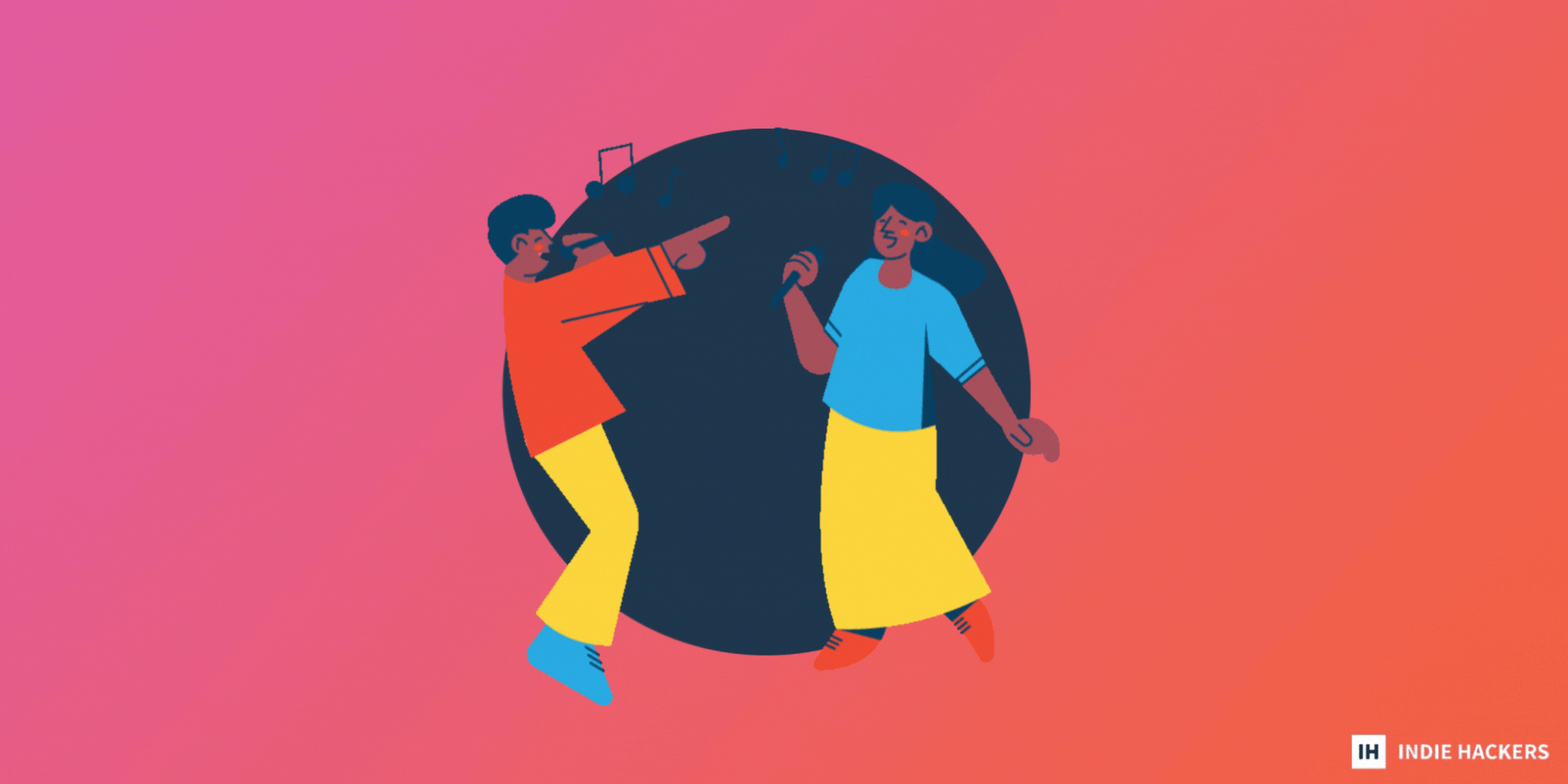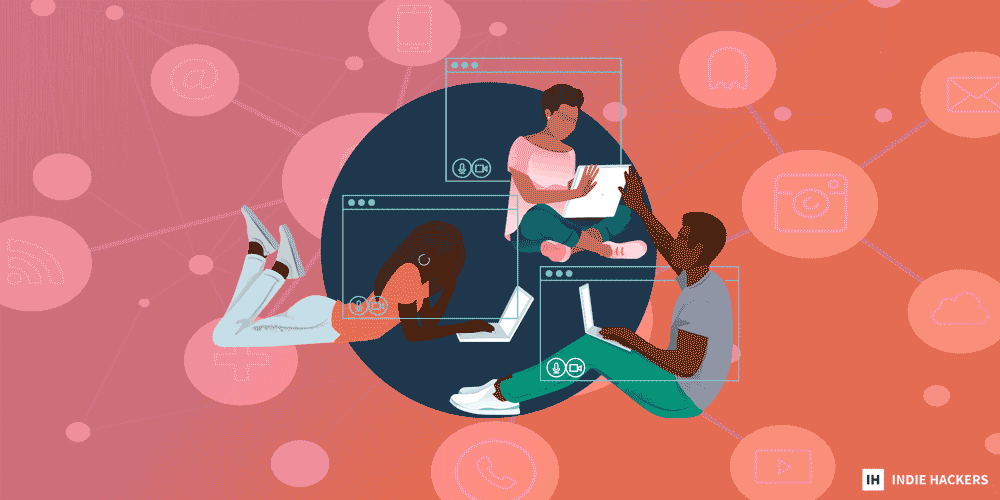Are users abusing your freemium model? - **If you offer a free tier or free trial, have you experienced users** creating multiple accounts to avoid upgrading and paying? Founders weigh in below on how they've successfully dealt with this issue. - **2
Are users abusing your freemium model?
-
If you offer a free tier or free trial, have you experienced users creating multiple accounts to avoid upgrading and paying? Founders weigh in below on how they've successfully dealt with this issue.
-
2023 looks to be the year of positivity, jubilance, and community. With these new opportunities in the "joy-conomy," founders can get in on the fun!
-
Founder Jozef hit $4,700 in monthly revenue just over a month after launching StealthGPT, an AI writing tool. Here's how he stays versatile, and the maximum amount of time he allocates to solving problems, whether big or small.
Want to share something with nearly 120,000 indie hackers? Submit a section for us to include in a future newsletter. —Channing
🆓 Preventing Users From Abusing Free Offers

by Yahia Bakour
I've found myself in a dilemma. I launched Essense, an online platform for analyzing user feedback at scale with AI, with a freemium model.
It appears that a ton of users are exploiting the free tier by creating multiple accounts. They aren't even trying to hide it! I'm uncertain about the best course of action moving forward.
My options include:
- Discontinuing the free tier.
- Further restricting the free tier.
- Paid trial.
- Adding a free trial to paid tiers.
I'd appreciate any advice from founders who have encountered a similar situation in the past.
Restrict, restrict, restrict
Banupriya notes that it can be difficult to strike a balance between the need to draw in and keep customers, and the need to make money:
Although it is upsetting that users are abusing the free tier by opening numerous accounts, removing the free tier entirely would not be the wisest course of action. Doing this may deter new users from trying out your product.
Instead, you might think about tightening restrictions on the free tier to stop abuse, including capping the number of free users or features. Introduce a paid trial for users to access all of the services for a brief period of time before deciding whether to upgrade to a more expensive plan.
It could also be a good idea to offer a free trial with the paid levels, so potential customers can explore all of the features before making a decision. The optimal course of action will ultimately depend on your unique business objectives and the requirements of your target market. It may be useful to carry out some user research, or speak with industry experts.
Talk it out
Nimmy recommends a direct approach:
First of all, it sucks that users are abusing your goodwill and hard work.
Second, this may be naive, but the first thing I would try is to actually talk to some of them. I'd email the first email address created by a user that obviously has duplicate accounts, and say something like this:
Hey, I noticed that you're creating duplicate accounts in violation of the terms of service. In doing so, you are abusing my freemium program and taking advantage of my hard work.
I would love to talk to you to gain an understanding about what's blocking you from upgrading your account.
Michael Pfister agrees, and adds a bit more:
How much does it cost you to support those free tier users that are abusing it? If they aren't costing you much money, why not let it ride for a bit until it becomes a bigger problem later?
As others have mentioned, I would recommend trying to talk to these users to see if you can convert them. If they are personal domains, you could also limit the number of free accounts per domain.
A quick list
Steven had a similar problem, and was able to handle it with these steps:
We had a lot of these abusers at first, but have since completely wiped it out. Here's how:
- Block every disposable email.
- Use Captcha on the registration page.
- Offer a minimum viable free tier. Basically, offer just enough for the user to understand that the product works as expected, and nothing more.
- Introduce a cheap first paid tier. Mine is $10, but it could be as low as $0.99.
That's about it. We actually released a free disposable email checker API, which powers our own stack to catch these abusers!
Make it too hard to cheat
Steven Soekha says that there should be something incorporated in your app that makes users invest time in their specific account:
It should be too much of a hassle to do the same thing over and over again when making new accounts. Make it difficult for them!
For example, if you have a SaaS where people can write thoughts down or label things, when trying to dodge the paid model by making a new account, they will lose all of the data they've already entered. They have to start over again.
My advice is to think of useful features that makes it too difficult to create a new account, therefore not worth it.
Free trial to paid tier
BossLady votes for no free tier, and offering a free trial to paid tier users (credit card required):
You will get a lot less users, but that will be a good thing. You only want feedback from the serious ones, anyway; those who have enough of a pain point that they are willing to pay.
This is YC's advice, by the way, and I agree with it. You want to tailor your product to your real customers, not everyone that might be slightly interested.
How have you prevented users from abusing your free offer? Share below!
Discuss this story.
📰 In the News

from the Growth Trends newsletter by Darko
🍪 Inside Google's plan to kill the cookie.
👀 Insights to boost B2B ad performance on LinkedIn.
💻 Replacing the word "price" with the word "cost" in your title tag could improve organic traffic.
📱 A new study shows that TikTok users are more open to in-app promotions.
🇫🇷 France is cracking down on social media dishonesty.
Check out Growth Trends for more curated news items focused on user acquisition and new product ideas.
🤸♀️ The Joy-conomy is Taking Off

from the Hustle Newsletter by Shân Osborn
The Signal: Let's face it. We could all do with a little lighthearted fun.
Last June, we wrote about how people want to bring more play into their lives. It turns out the party was just getting started: 2023 looks to be the year of positivity and jubilance, with an additional focus on niche community building.

Here's an update on three trends in the "joy-conomy" space.
Brands boost playfulness
Businesses are tweaking their offerings to encourage optimism and childlike abandon. For example:
-
October 2022: McDonald's introduced Happy Meals for adults. Total sales rose by ~10% after the launch, and half of the limited-edition toys were gone within the first four days.
-
November 2022: Moxy Hotels' Manhattan branch launched its Playful Stays to offer "endless amusements enlivened with the spirit of the absurd." Amenities include game rooms, pinball arcades, dress up items, and Instagram-worthy decor.

*Source: Moxy Hotels
You don't need to reinvent the wheel to provide people with moments of fun and emotional release.
Founders could rebrand offerings traditionally focused on children, or introduce playfulness through product experiences. Seth Rogan's cannabis brand, Houseplant, recently unveiled new collectible, Lego-like packaging (this one is clearly only for adults).
Social platforms prioritize positivity and intimacy
It's true that everybody and their dog is launching an app these days. But just when you think the market is saturated, a new entrant comes along and knocks it out of the park.
The most recent winner? A social positivity app for teens.
Gas, which allows users to anonymously compliment each other, launched late last August. By October, it had hit the top spot on the App Store (beating even TikTok), and by December it had reached 10M downloads and $6M in sales.
Less than six months after launch, and boasting a grand total of four team members, Gas was acquired by Discord.
This focus on social positivity is echoed by a new community app, Niche, which is hot off a $1.8M pre-seed raise. Users join close-knit social clubs around shared identities or interests, and clubs are often centered on positivity, like Hit of Happiness. So far, reviews are knocking it out of the park.
Consumers are clearly looking for positive modes of engagement, intimacy, and support online. People want to feel a sense of belonging that current platforms just can't offer.
Founders could compete directly with niche social platforms, designed around positivity and uplift, for specific markets like seniors or the LGBTQ+ community.
Brands might develop a strong, genuine presence on new platforms, or find other ways to build intimate communities. A great example is athleisure brand JoJa, which:
JoJa's new platform will foster intimacy by gathering like-minded individuals who can bond over shared workouts, beauty tips, and nutrition advice. Members can also unlock exclusive JoJa clothing discounts by completing fitness challenges.

*Source: JoJa
JoJa isn't the only activewear brand jumping on the playfulness and community trends.
Set Active just launched a "community-driven" brick-and-mortar store, inspired by childhood field trips to museums, and a Community Collection, which features designs chosen by fans.
Brands don't have to open physical stores or develop their own app to give intimate community building a go. Niche now allows small businesses to start their own Clubs and control, own, and monetize the content that they create.
Jump for joy, literally
Boring exercise is out, and fun is in!
Psychologist Kelly McGonigal recently launched the Joy Workout, which includes movements scientifically shown to elicit positive emotions. These include bounces, sways, jumps, and a move that Kelly calls "celebrate," which mimics tossing confetti.
Joining in on the fun is Pony Sweat, an '80s-style dance fitness company that champions "anti-perfectionism and radical self-acceptance."
The company has seen its Instagram following more than double since 2020, and has since launched virtual class options and a community Discord server.
As demand grows, the niche of dance fitness in general is making a roaring post-pandemic comeback.
Founders could incorporate joyful movement and dance into their exercise offerings, or focus on ancillary niches like:
- "Zumba:" 513K global Google searches per month, per Ahrefs.
- "Jazzercise:" 52K.
- "Aerobics classes near me:" 16K.
- "80s workout clothes:" 11K.
- "Fun ways to exercise:" 2K.
Would you build in the joy-conomy space? Let's chat below!
Subscribe to the Hustle Newsletter for more.
🌐 Best Around the Web: Posts Submitted to Indie Hackers This Week

💎 Generalists are rare gems. Posted by Dmytro Krasun.
🛠 If you were starting a new project today, what tech stack would you use? Posted by Ellen.
😔 I've been searching for a job for a year now, and I'm tired. Posted by Kim.
📧 Managing emails from several domains. Posted by Maël.
💡 Struggling to find good ideas? Posted by Upen.
😩 Marketing feels awkward and futile. Posted by Andrew Stuart.
Want a shout-out in next week's Best of Indie Hackers? Submit an article or link post on Indie Hackers whenever you come across something you think other indie hackers will enjoy.
🗓 Jozef Hit $4.7K MRR in 37 Days

by Jozef
Hi, indie hackers! I'm Jozef, and I launched StealthGPT, an AI writing tool, on March 1.
Here's StealthGPT by the numbers:
- 2.5K+ users.
- Hundreds of subscribers and API clients.
- $4.7K MRR in 37 days.
I'm very proud of these numbers, especially given my background as a self-taught dev, plus the fact that this is my first public product. I wrote a blog post here a week or two ago about the company when we were at $500+ MRR, and I wanted to offer some retrospective for other founders by sharing what has led to our rapid success.
Let's dive in!
Our focus with StealthGPT
Some of this advice might come off as common sense or cliché, but often the best advice is something you have heard before.
Speed and power:
I am known to run at a million miles an hour. My brain is nonstop, full of ideas. I am always coming up with new ideas for features and marketing. But, I also have to stop myself. I want to be sure to build tools that are powerful, not half-baked. You need a balance in these sectors.
Discoverability and marketing:
Like many founders, I hate marketing! It is frustrating because there are way more variables, it's very hard to predict, and it can get expensive and time-consuming quickly. However, it is probably just as important as the product itself.
I can't tell you how many amazing products I've seen broadcasted on Twitter that look amazing and are reasonably priced, but can't get more than a few followers or paying subscribers.
In this day and age, it's never been easier or more affordable to reach out to people. Take advantage of free social media and low-cost advertisements. You do not need a marketing person to start. Be your own marketing team. I am!
Design (UI/UX):
With StealthGPT, I'm not focused on having the best tech or the latest features. I am far more concerned about design for the users, making sure they understand how to use the tools, and successfully building for mobile.
Out of the 30K users that hit our site in 30 days, nearly 19K (two-thirds) were using a mobile phone. If you aren't designing for mobile, you will lose to someone who does.
The reason we focus so heavily on UI/UX for most of our dev time is this: A simple, noise-free interface that's easy to use will attract people to AI technology in a migration never seen before in tech. UI/UX, I would argue, is what brought on the Golden Age, and what has contributed tremendously to our success.
Versatility and overcoming obstacles:
With anything you set out to do, you will run into issues. It's how you respond to those issues that will separate you from the rest. How long does it take you to solve a problem, whether it's minor or major?
When we have any issues, from basic customer service to an update to our site, it takes anywhere from about five minutes to four hours (maximum).
Also, on the subject of versatility, I've spoken with founders who are strapped for cash, but do not want to wear different hats to grow their business. If you're starting off with very low resources, as I did ($0 in funding), it is absolutely critical to be able to perform multiple tasks to see your business succeed.
I hope this helps! I am open to helping any founders. I have even helped my own competition before. I really do not mind, and I would love to build more relationships in the space! I greatly appreciate everyone else's posts, and the sharing of wisdom on Indie Hackers!
Discuss this story.
🐦 The Tweetmaster's Pick

by Tweetmaster Flex
I post the tweets indie hackers share the most. Here's today's pick:

🏁 Enjoy This Newsletter?
Forward it to a friend, and let them know they can subscribe here.
Also, you can submit a section for us to include in a future newsletter.
Special thanks to Jay Avery for editing this issue, to Gabriella Federico for the illustrations, and to Yahia Bakour, Darko, Shân Osborn, and Jozef for contributing posts. —Channing







